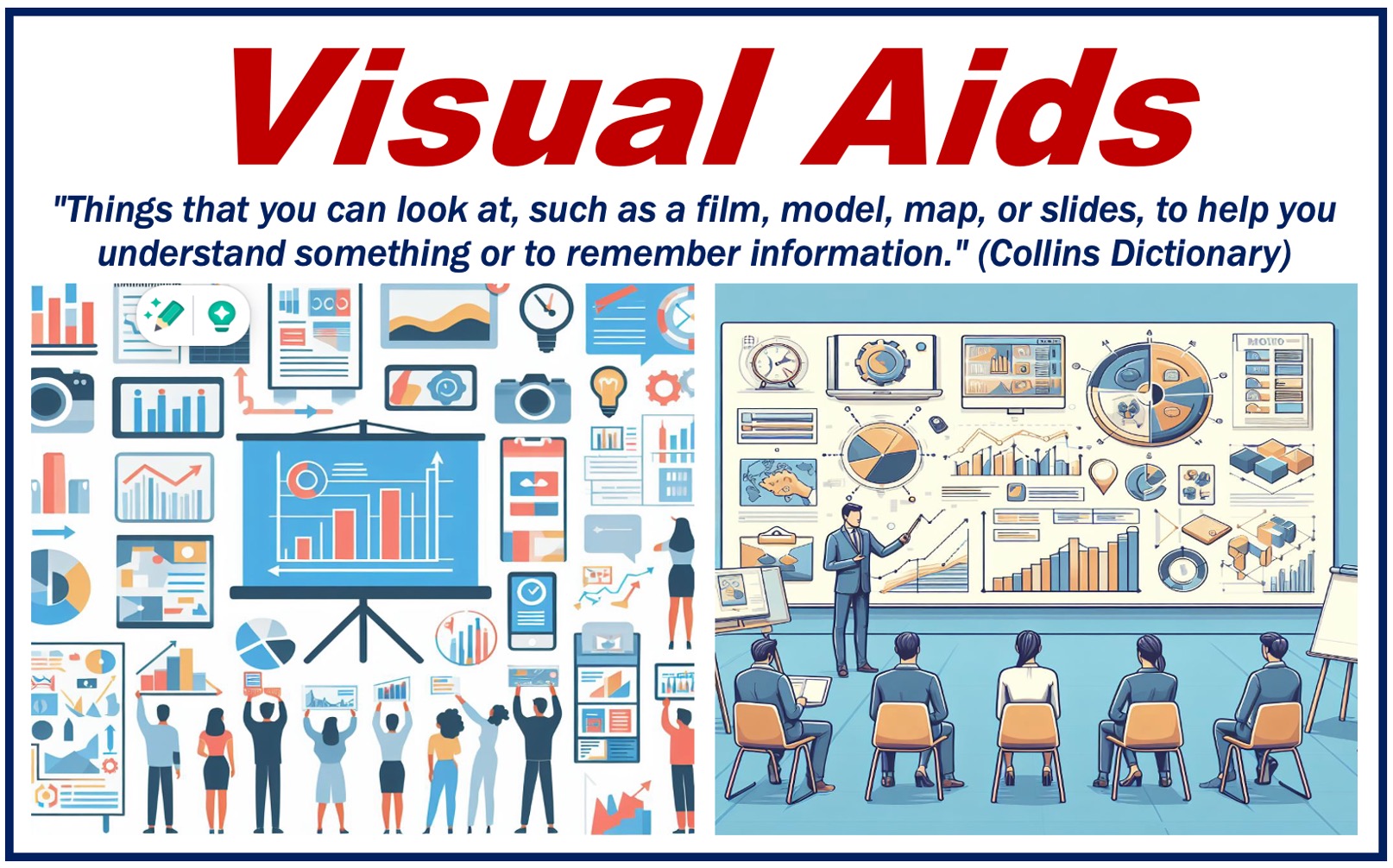In today’s digital age, visual platforms like YouTube, TikTok, and Instagram have popularized the consumption of information in visual forms. Visual aids have become essential tools in education, business, and in everyday interactions.
They help present information or data graphically. Visual aids provide an easier way to clarify, explain, or support a point in a more engaging and digestible manner.
Power of visual aids
- Enhanced comprehension
Visual aids can make complex information easier to understand.
- Retention
People often remember visual information better.
- Engagement
They can grab our attention in ways that words on paper might not be able to.
- Clarification
Visuals can help explain and clarify points that words might not correctly specify.
Types of visual aids
There are many types of visual aids, such as:
- Graphs and charts
Helpful for showing statistics and trends.
- Diagrams
Help in the explanation of systems or structures.
- Photographs
Give real-world examples and context.
- Videos
Use storytelling and motion to draw viewers in.
- Infographics
Combine images and text to present information.

Using visual aids properly
“If you use visual aids effectively, you can convey a wide range of information, ideas, and opinions that might be difficult to express through writing or speech alone. Here are some tips for their effective use:
- Relevance
It should be directly related to the content it accompanies.
- Simplicity
Try not to clutter your message with too many visuals or too much information.
- Quality
Make sure that the visuals used are of high quality.
- Accessibility
Ensure that the visual aids can be understood by everyone of all ages and those with visual impairments.
Challenges
Creating effective visual aids can present challenges, such as:
- Over-reliance
Visuals should complement your message, not replace it. They serve to enhance, not to be the sole carrier of information.
- Misinterpretation
If the designs are of poor quality they might be misinterpreted.
- Technical issues
Technical difficulties may impede the use of visual aids during presentations.
